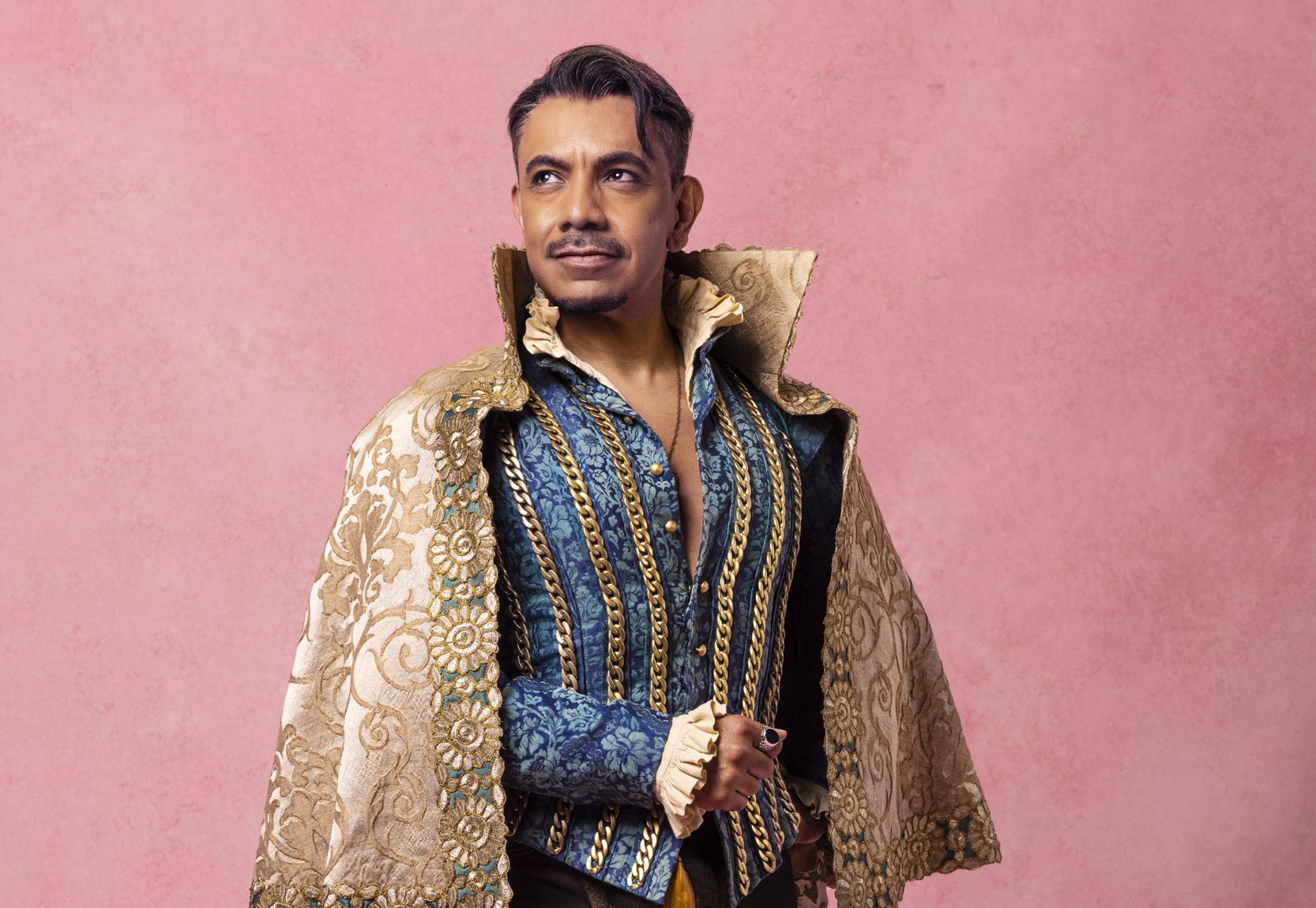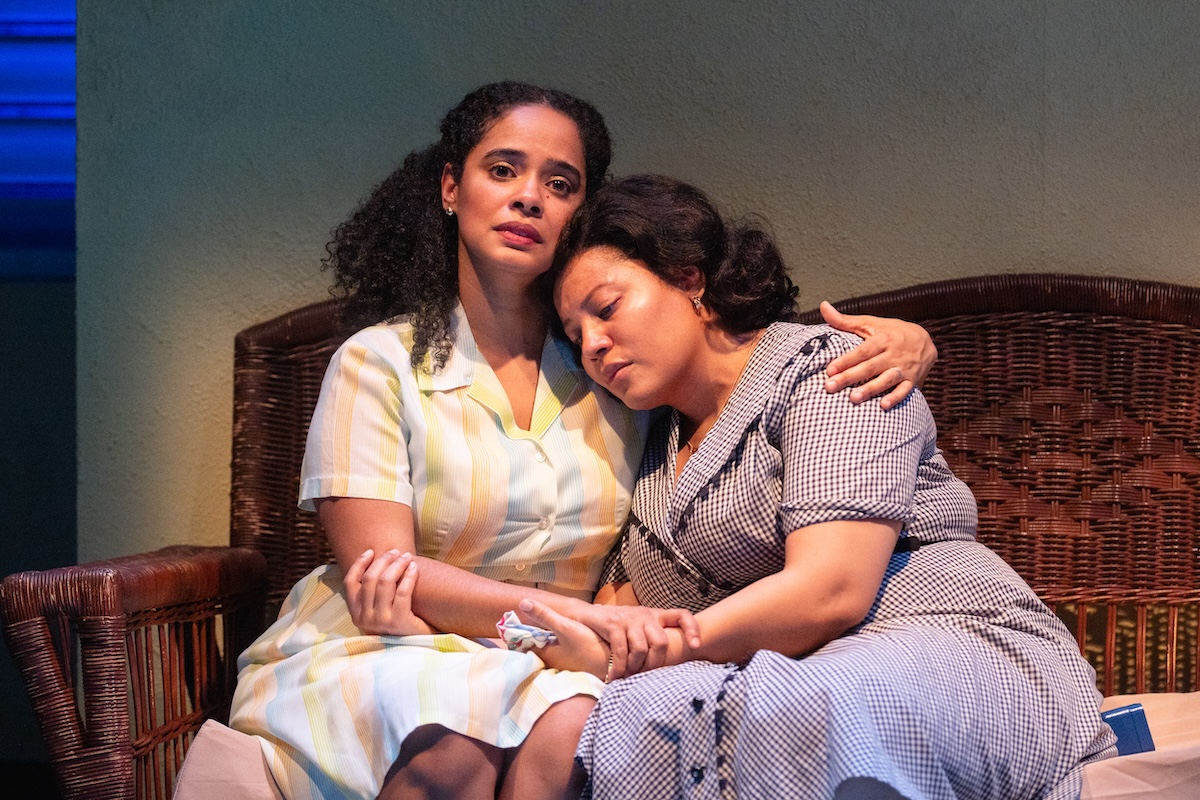Who’s Afraid of Virginia Woolf?

in Who’s Afraid of Virginia Woolf?
(Photo © Carol Rosegg)
The word “deglamorized” only begins to describe her: When Kathleen Turner comes through the double-entry doors on John Lee Beatty’s smartly cynical notion of a New England faculty house in the new Broadway production of Who’s Afraid of Virginia Woolf?, she appears to be a woman who’s long since let herself go. The drab outfit that costume designer Jane Greenwood has found for her (on a K-Mart rack?) doesn’t disguise the fact that this woman’s waist is a thing of the past. The flats in which she’s padding around rob her of physical grace. Her doughy face is set in an expression of weary disdain, almost as if she sniffs impending old age. Her wavy, shoulder-length hair has the bounce that commercials promise, but the devil-may-care coiffeur is no more than the last vestige of what might once have been young beauty.
Turner is instantly a full-fledged embodiment of the Martha that Edward Albee sprang on the theater world in Virgina Woolf, which was the major theatrical event of 1962. (The Pulitzer Prize decision-makers refused to honor the play with that award, thereby further tarnishing its already iffy reputation.) When Turner opens her mouth to spew the first of the script’s abundant, still-startling imprecations, her voice is a foghorn that’s been marinated in low-shelf whiskey. The lines that she speaks — “What a dump!” being the most famous among them — are arresting in themselves, and the flatted tones in which she speaks them fully communicate Martha’s disappointment and resistance.
That’s just for starters. Turner, who was sexy and desirable in the slip that she wore for the 1990 Cat on a Hot Tin Roof and statuesque as a caryatid when completely naked in The Graduate only three years ago, here makes no concessions to allure. Her Martha goes after husband George (Bill Irwin) with all the faulty forward thrust of an off-course torpedo. Making a fumbled play for late-night guest Nick (David Harbour), Turner gives herself over to Albee’s character in the way that clay gives itself over to a pot-thrower. She’s ready to flash all the colors of the dramatist’s palette, most of them tinged with the brown of failure. It might be said that her performance culminates in the line “I am the Earth Mother.” When she says this, gruffly but not without a hint of warmth, she is convincing: This Martha is the Mother of a polluted Earth.
Because Turner is giving such a star turn by submerging everything of the star in her, she’s the reason to see this Who’s Afraid of Virginia Woolf?, a play that was in 1962 and still is the last word on the disillusionment of the education-and-sherry set. With the exception of Beatty’s dipped-in-numbing-browns surroundings, nothing else in the production entirely comes up to Turner’s level. To be sure, the proceedings are never less than effective. As the by-now-familiar wee-hours taunt fest unravels, Martha still baits George, and he retaliates in the only manner he knows — by going after the younger, new man on campus. The assailed, 28-year-old Nick attempts to fight back while protecting his inebriated and upchucking wife Honey (Mireille Enos). There’s still ominous talk of the son that George and Martha have supposedly reared and the hysterical pregnancy that Honey endured. (This is an early example of the childless-couple theme that has obsessed Albee, who was adopted.) And it’s still very noticeable that Nick — whose name is never actually spoken in the play — doesn’t rush Honey out of George and Martha’s place when George insists on playing “Get the Guest.” The fact that the guests remain on the dangerous premises continues to feel like Albee’s least successful contrivance.
But though the play is almost intact (it was apparently revised in 2004), the potential it has to suggest the destructive nature of people made monstrous on their own mental steroids is only partially realized. The problem is Bill Irwin — and, by extension, director Anthony Page, who hasn’t guided the actor knowingly enough. Irwin, who was right on target in Albee’s The Goat, or Who is Sylvia?, plays many of George’s moments with the dexterity that he exhibits in his own acclaimed pieces. In particular, he gets George’s hampered affection for Martha and he induces the genuine laughs that Albee built into the script, but he misses the larger implications of George’s nasty wit and concomitant fecklessness. George is a beaten man, aware that he has missed his chance at the chairmanship of the college’s history department. He knows that he’s married to the boss’s daughter, with all the implied negatives. He’s a disgruntled academic, done in by his own weaknesses, but Irwin doesn’t show him bucking under the weight of the loss.
David Harbour has an easier time with Nick. Physically, he’s everything that Albee calls for. Harbour had a not dissimilar assignment in last year’s Between Us; here, he handily becomes a former campus dreamboat settling into a career as an unimaginative biology professor and an uncertain husband. Mireille Enos, burbling her lines to indicate Honey’s desire to please, may never have seen Sandy Dennis’s film interpretation of the role, yet she gives the impression that she’s not only seen it but studied it. If so, that would explain why she’s more caricature than character. (Director Page doesn’t seem to have helped her any more than he helped Irwin.)
If Eugene O’Neill’s Long Day’s Journey Into Night is the great American play of the 20th century, Albee did himself proud by writing a stunning Long Night’s Journey Into Day. But Anthony Page’s treatment suggests that, when it comes to George and Martha’s battle, he’s the one who’s afraid of Virginia Woolf.











